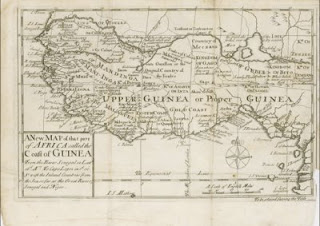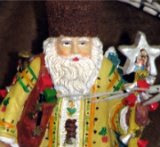“More than one hundred years ago, a group of descendants of the Pilgrims who sailed on the Mayflower in 1620, saw the need for a national society to honor their memory. The intention was to remember these Pilgrims who established Plymouth Colony, in what was then called the northern part of Virginia. Today there are tens-of-millions of individuals descended from these brave souls. It is the goal of The Mayflower Society to join together people who share this heritage and to carry on the memory of our Pilgrim ancestors.” Source: http://www.themayflowersociety.com/index.htm.
Established in 1897 in Plymouth Massachusetts, the Society strives to educate interested parties regarding the history of the Pilgrims. In addition, they endeavor to reveal the Pilgrims roles and contributions which helped shape the history of the United States of America. The Society is one of the three largest hereditary organizations in the U.S.
In regards to genealogical resources pertaining to the Society, the Jacksonville Public Library holds the following material:
Mayflower index, compiled and edited for the General society of Mayflower descendants by William Alexander McAuslan, historian general.
GEN 929.373 M117m
This resource gives the names of men who married daughters, granddaughters, and great granddaughters of Mayflower Pilgrims. Part One provides (1) the names of persons descended from the Mayflower pilgrims in alpha order numbered consecutively, (2) the name of their spouse, (3) and the parent’s number which corresponds to the parents’ names. Part Two contains the names of husbands and wives included in the list of descendants.
Mayflower families through five generations : descendants of the Pilgrims who landed at Plymouth, Mass., December 1620.
GEN 929.2 A1M468
This is a 20 volume set. Each volume in this series contains detailed information on individual families, genealogies, histories, vital records, and much more.
Mayflower marriages: from the files of George Ernest Bowman at the Massachusetts Society of Mayflower Descendants.
GEN 929.3 R816m
Source provides information regarding 10,000 marriages spanning five centuries, with names, dates, and sources. It shows the line of descent within each marriage, as found in the Bowman files. Inter-marriage among Mayflower descendants is also shown with descent of the partner. Also included are names of partners who had a child together but were not married. All name index.
GEN 973.22 h555h
This item provides in-depth pedigree material on the Mayflower planters, and "first comers" to Plymouth and Cape Cod. Based largely on the genealogy of Mayflower planter Stephen Hopkins, includes both male and female lines through a number of generations.
The Mayflower Reader: a selection of articles from The Mayflower descendant.
GEN 929.374 M4682Bo
A comprehensive selection of articles from the first seven volumes of The Mayflower Descendant, an authoritative journal devoted to Pilgrim genealogy and history, discontinued in 1937. Includes transcriptions of wills, inventories, passenger lists, memoirs, genealogies and historical sketches
Mayflower source records : primary data concerning southeastern Massachusetts, Cape Cod, and the islands of Nantucket and Martha's Vineyard: from the New England historical and genealogical register.
GEN 929.37448 R644m
Sixty articles from more than 150 issues of the Register. It identifies 25,000 persons of Mayflower descent and consists of church records, vital records, cemetery inscriptions and probate records - all referencing numerous offspring of the original Pilgrim fathers.
The May-flower & her log, July 15, 1620-May 6, 1621.
GEN 974.48202 A513m
This resource discusses the May-Flower's charter and information about the ship itself as well as the May-Flower's consort, the Speedwell. Also provides insight into the officers and crew, passengers, quarters, food and cooking. Appendix includes the agreement of the merchant adventurers and planters, many letters written by Robert Cushman and the May-Flower compact. Preface and index are new additions to original edition.
The English ancestry and homes of the Pilgrim Fathers: who came to Plymouth on the "Mayflower" in 1620, the "Fortune" in 1621, and the "Anne" and the "Little James" in 1623.
GEN 929.374482 B218e
This gives biographical sketches of 112 passengers who sailed on the first four ships to New England, including origins, family connections, and later histories. Passengers presented in alphabetical order by ship.
Mayflower increasings (for three generations).
GEN 929.3744 R816m
Based on a 37 page booklet published in 1922, this has revised and expanded the descent of the Mayflower passengers to three generations. Well documented sources. It is indexed by family name.
GEN 929.3744 R816m
Compilation of birth and death records from the Bowman files, the largest manuscript resource on Mayflower genealogy in existence. It encompasses all vital records with references to 50,000 Mayflower relations. Also includes references to burial location, cause of death, and address at death gleaned from land and will records, court and church records, transcripts of personal letters, and more. Each volume separately indexed.
Mayflower deeds & probates: from the files of George Ernest Bowman at the Massachusetts Society of Mayflower Descendants.
GEN 929.3744 R816m
This is a compilation of deeds and probate records extracted and transcribed from the Bowman Files. Several thousand deed abstracts provide such information as name, occupation and residence, date, sale, price, acreage, and location of the land, witnesses, date of recording and much more. This index contains 25,000 entries.
The Mayflower Quarterly
First published in 1935, this quarterly publication contains societal news, events, and updates as well as articles regarding Mayflower genealogies. Although the Jacksonville Public Library does not have a current subscription, it does have issues between 1976 and 2006.
In short, the above resources are prime tools to begin searching your pilgrim connection. To learn more about the Mayflower Society and their resources, please visit their webpage at http://www.themayflowersociety.com/index.htm.
“Family History – Past, Present, and Future”





